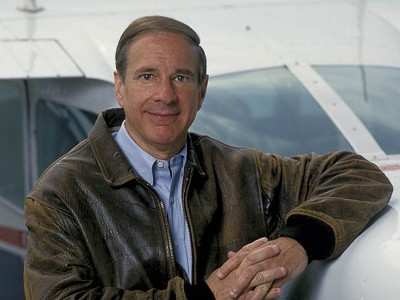Calls For Broader Support Of General Aviation
 The Federal Aviation Administration
needs to show even greater support for general aviation in a key
short-term strategic planning document known as the FAA Flight
Plan. That's the message in a letter from Aircraft Owners and
Pilots Association President Phil Boyer to FAA Acting Administrator
Robert Sturgell.
The Federal Aviation Administration
needs to show even greater support for general aviation in a key
short-term strategic planning document known as the FAA Flight
Plan. That's the message in a letter from Aircraft Owners and
Pilots Association President Phil Boyer to FAA Acting Administrator
Robert Sturgell.
"AOPA believes the agency needs to put a special emphasis on
preserving and improving America’s general aviation airports,
increasing all-weather access to those airports, and finding an
unleaded alternative to today’s low-lead aviation gasoline,"
said Boyer.
Each year the FAA Flight Plan looks at the coming five years,
and what the agency’s management initiatives and priorities
should be. Boyer praised the agency for work already done on behalf
of general aviation airports, but noted that more is needed due to
continuing pressure on those airports.
"The agency has done excellent work in helping to protect and
preserve general aviation throughout the country and this must be a
continued area of emphasis that is included in the FAA’s
Flight Plan," he wrote. "America’s airports are the access
point for the nation to the air transportation network –
without a robust airport network, the country’s ability to
maintain its leading role in the world economic arena will be
adversely effected."
Boyer also noted the Joint Planning and Development Office,
which is leading efforts to implement the Next Generation Air
Traffic System, has identified the need to preserve the
nation’s airport system, and called on the FAA to do all it
can to help the preservation effort.
"The FAA must build on this visionary work and focus resources
on developing plans, policies and budgets that not only preserve
the airports that we have today, but also ensure their future
through infrastructure investments."
One of the ways the FAA can show ongoing support for general
aviation airports is to continue its robust implementation of
satellite-based precision instrument approaches using the Wide Area
Augmentation System, or WAAS. Those approaches mean that the
airports’ usefulness is enhanced because more aircraft can
use them in a greater variety of weather conditions.
"WAAS avionics... enable pilots to use more than 1,000 new
precision WAAS LPV approaches, many at airports where there is no
other precision approach landing system," Boyer wrote Sturgell.
"However, without the continued expansion of LPV approaches, the
potential benefits available from the WAAS system are
underutilized." Satellite-based LPV approaches provide guidance
similar to a ground-based instrument landing system (ILS).
Boyer also states the general aviation community recognizes the
need to find a successor to the current leaded aviation gasoline.
In his letter, Boyer called on the agency to continue explicit
support for research efforts to find an unleaded alternative.
"The establishment of a strategy in 2009 and the implementation
of that strategy in the follow-on years will provide the public
with confidence that all elements of aviation are concerned about
the future of our environment," he wrote.

Boyer noted AOPA members are generally optimistic about the
future of general aviation -- but, "the FAA needs to remain focused
on providing pilots with a diverse and robust integrated airport
system, services that support operations at general aviation
airports in all-weather conditions, and the ability to successfully
transition from today’s low-lead gasoline to a completely
unleaded gasoline."
"Including these key issues in the FAA Flight Plan will ensure
that the agency is fully focused on the right areas for general
aviation’s future," he concluded.
 NTSB Final Report: Cozy Cub
NTSB Final Report: Cozy Cub ANN FAQ: Contributing To Aero-TV
ANN FAQ: Contributing To Aero-TV Classic Aero-TV: Seated On The Edge Of Forever -- A PPC's Bird's Eye View
Classic Aero-TV: Seated On The Edge Of Forever -- A PPC's Bird's Eye View ANN's Daily Aero-Linx (04.29.25)
ANN's Daily Aero-Linx (04.29.25) ANN's Daily Aero-Term (04.29.25): Execute Missed Approach
ANN's Daily Aero-Term (04.29.25): Execute Missed Approach




